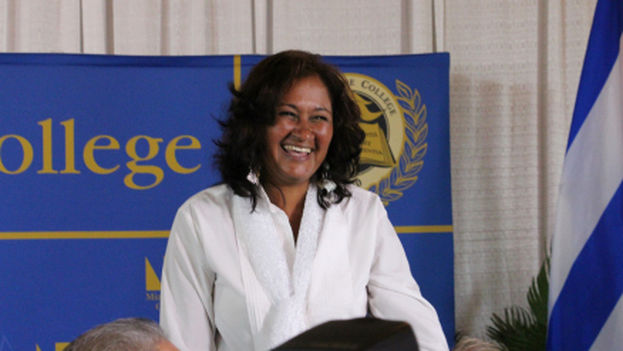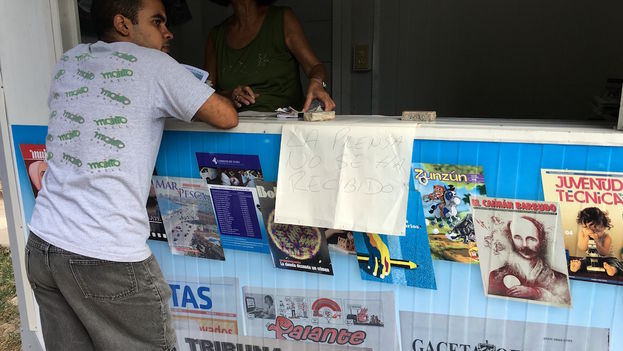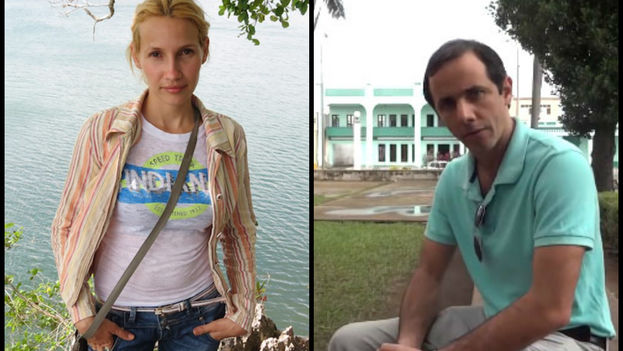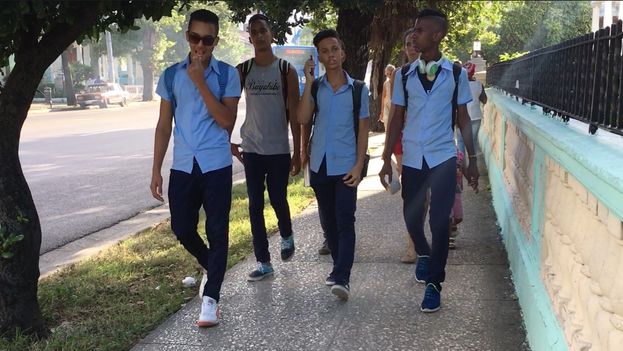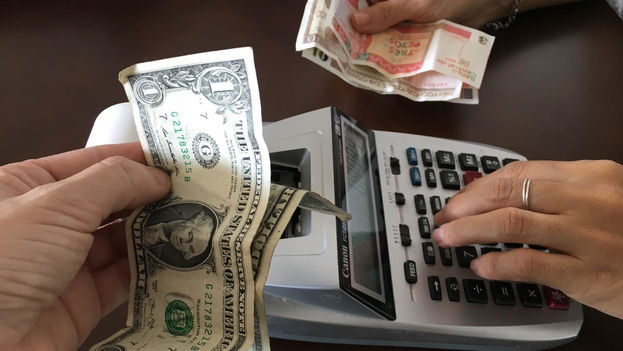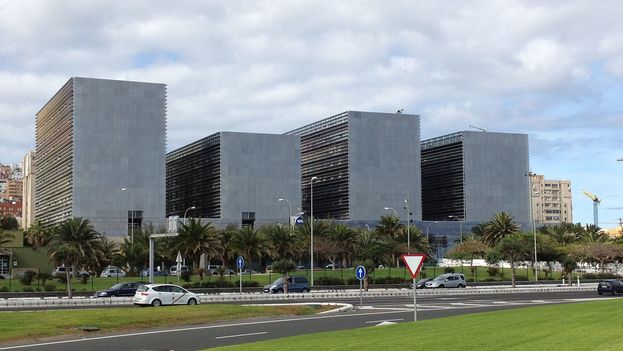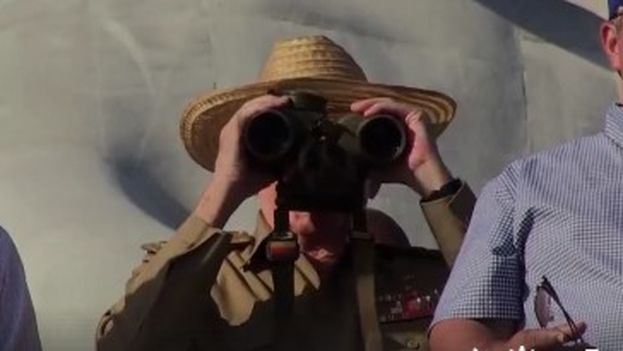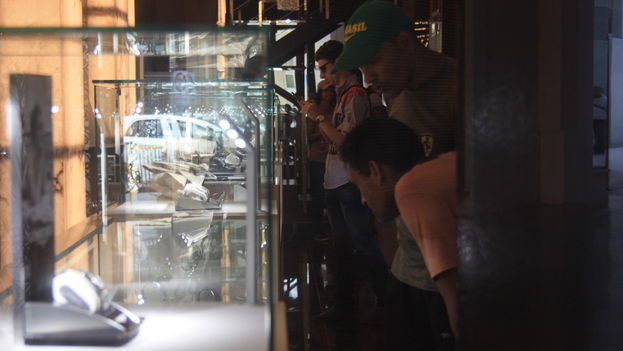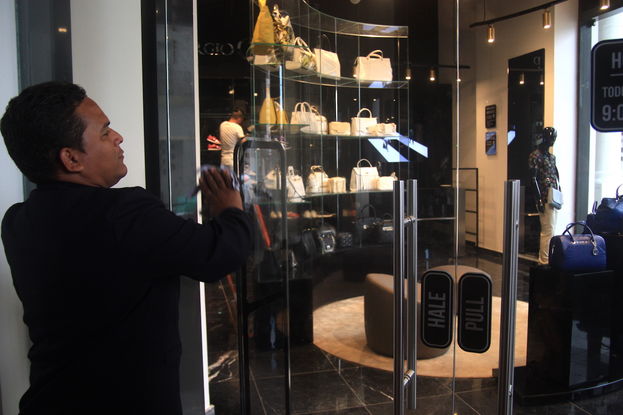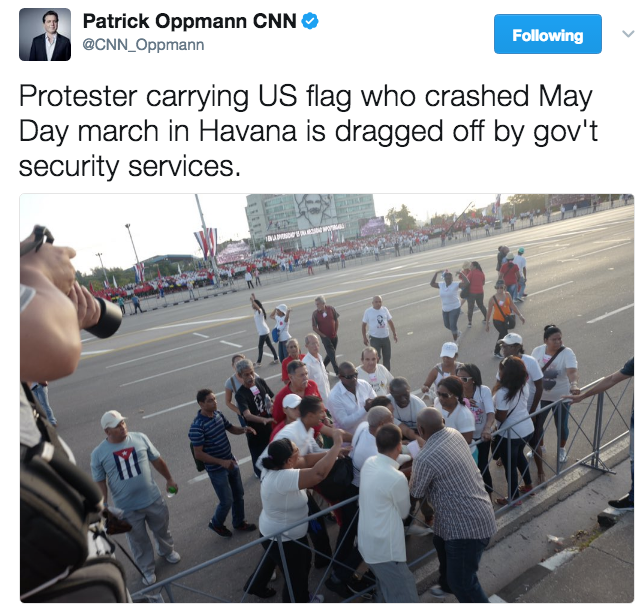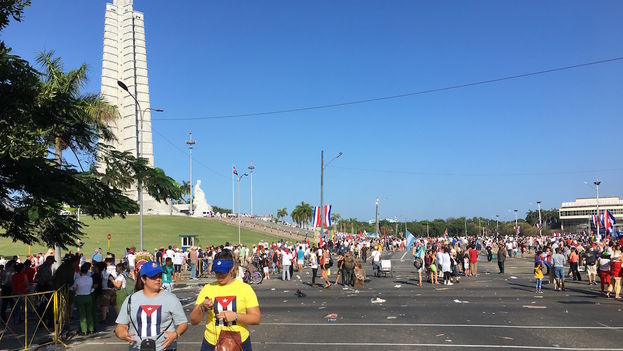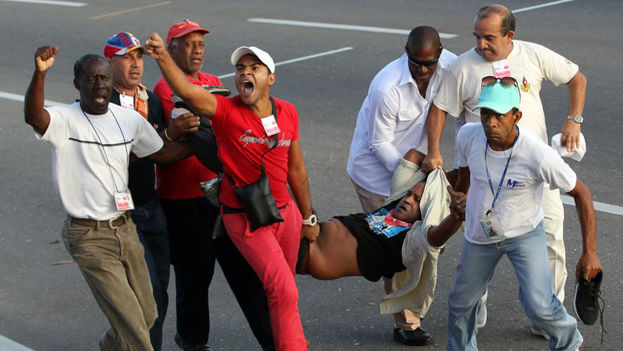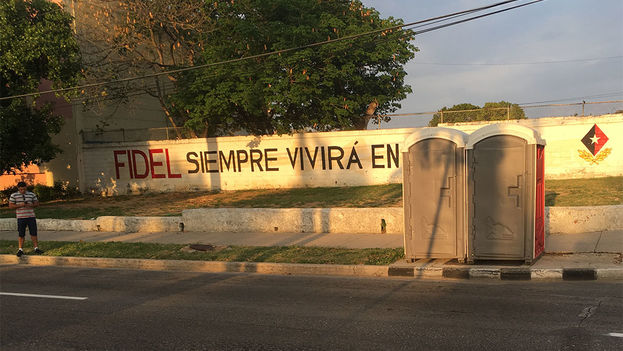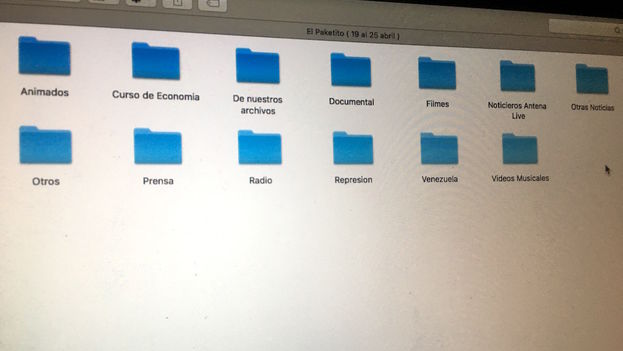
![]() 14ymedio, Luz Escobar, Havana, 5 May 2017 — Uncensored, fun and with many varied themes — this defines the producers of the paketito (little packet), a new compendium of audiovisual material that aims to fill the gaps left by the popular weekly packet.
14ymedio, Luz Escobar, Havana, 5 May 2017 — Uncensored, fun and with many varied themes — this defines the producers of the paketito (little packet), a new compendium of audiovisual material that aims to fill the gaps left by the popular weekly packet.
Unlike its predecessor, which is made and distributed publicly, the paketito lurks in the underground, so as to be able to offer materials that the organizers of the weekly packet don’t include in order to avoid problems with the authorities. This choice to play it safe annoys a growing number of viewers, who find the weekly packet “traditional,” “comfortable,” and “domesticated.”
Carlitos, who preferred to use a pseudonym in speaking with 14ymedio, is one of the managers of the paketito and proudly recounts the emergence and evolution of this initiative that its creators distribute with a determined content, but the users enrich it during its circulation. continue reading
The creators distribute it with a determined content, but the users enrich it during its circulation
The compendium was born just over three years ago, in an informal way when a group of friends began to exchange files. “From the beginning we passed censored material, such as documentaries and news,” he recalls. “We also included old Cuban publications that had been forgotten,” adds Carlitos.
The audio content included every week occupies 5 gigabytes of memory, although there are larger versions that may contain a much larger offering.
The young man believes that many of these magazines are not currently known due to “the lack of historical memory” on the island because of censorship. So the first editions of the paketito had copies of “those pages from [the magazine] Bohemia of 1959 in which Fidel Castro affirmed that he was not a communist.”
Along with articles from the national press from more than half a century ago, the producers of the selection decided to include “photos of our parents and grandparents from before the Revolution.”
Among the materials that circulated from the beginning were songs impossible to find in the stores or to listen to on official media, such as those of the Los Aldeanos duo and the punk rock group Porno para Ricardo.
Carlitos clarifies that his audio-visual extract is smaller than the weekly packet, but “brings everything” that is not included in the version circulated by his ‘first cousin’
The obstacles soon appeared. The restless transgressors were a little frustrated at first because they could not update their deliveries regularly, but since the beginning of this year they have achieved a weekly frequency. Carlitos clarifies that his audio-visual extract is smaller than the weekly packet, but “brings everything” that is not included in the version circulated by his ‘first cousin.’
Meanwhile, a great distance separates the paketito from its official counterpart, La Mochila (the Backpack), created by the Youth Club to counteract the influence of the weekly packet, and which, in its latest installments, included numerous materials about the late president Fidel Castro.
Unlike this institutional imitation, every week the paketito contains a folder with written press prohibited on the island. “We load the PDF or summaries of web pages such as Diario de Cuba, 14ymedio and Cubanet,” adds Carlitos. There are also cartoons, news, movies, documentaries and courses. The documents from decades ago also continue to have an important presence in the weekly compilation.
The information comes from many sources. Some of it is downloaded over the internet. “In our team some of us work in state institutions and we have internet in our offices and we download what we need there. Other files we download in the public wifi points.”
A new and growing source of information comes from people who simply send a video that they recorded with their cellphone somewhere, when a significant event occurs
A new and growing source of information comes from people who simply send a video that they recorded with their cell phones somewhere, when a significant event occurs. Activists who travel abroad and download materials from YouTube or other social networks also contribute.
The clandestineness with which the paketito is assembled affects the expansion of its distribution, which has been restricted to customers who are as ‘transgressive’ as it creators. Through USB memory sticks and external hard drives, the files pass from hand to hand.
The compilation circulated the film Hands of Stone that was not shown at the last Havana Film Festival because its director, Jonathan Jakubowicz, was in solidarity with Carlos Lechuga’s censored film Santa and Andrés. Right now, the paketito is offering this latter film, along with the also stigmatized chapters of Miguel Coyula’s documentary Nadie about the poet Rafael Alcides.
The paketito only appears through contacts within the distribution network that demand a lot of discretion, not unlike the challenges of buying shrimp or cheese on Cuba’s black market.

